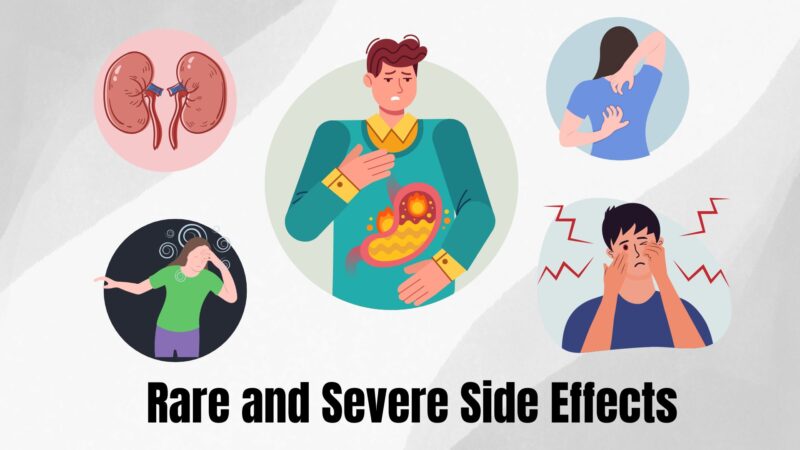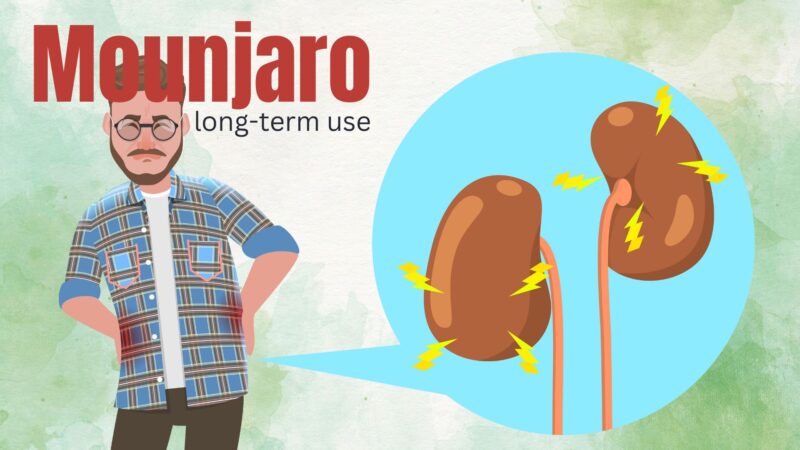Mounjaro is an injectable prescription medicine used in conjunction with diet and exercise to improve blood sugar levels in adults with type 2 diabetes mellitus. As a once-weekly medication, Mounjaro offers a convenient option for managing type 2 diabetes.
However, like all medications, understanding the potential side effects of Mounjaro is crucial for both patients and healthcare providers. This article aims to provide a comprehensive overview of the notable side effects of Mounjaro, including common, rare, and long-term effects, as well as precautions, interactions, and strategies for managing these side effects.
Side Effects of Mounjaro

Mounjaro, an injectable prescription medicine used along with diet and exercise to improve blood sugar in adults with type 2 diabetes mellitus, has been associated with various side effects. Understanding these side effects is crucial for patients and healthcare providers to manage the treatment effectively.
| Side Effect | Description |
| Nausea | A common reaction that may decrease over time. |
| Diarrhea | May lead to dehydration, especially in those with kidney problems. |
| Decreased Appetite | Often accompanies other gastrointestinal issues. |
| Vomiting | Can be managed with dietary adjustments. |
| Constipation | A frequent issue reported by patients. |
| Indigestion | May be experienced along with other digestive problems. |
| Stomach Pain | Often associated with other gastrointestinal side effects. |
| Gallbladder Problems | Symptoms may include pain in the upper stomach, fever, yellowing of skin or eyes, and clay-colored stools. |
| Kidney Problems | Diarrhea, nausea, and vomiting may worsen kidney issues. |
| Severe Stomach Problems | Reported in some people, requiring immediate medical attention. |
| Thyroid Tumors | Including a type of thyroid cancer called medullary thyroid carcinoma (MTC). |
| Inflammation of the Pancreas | Severe pain in the stomach area that may require immediate medical care. |
| Low Blood Sugar | Symptoms may include dizziness, sweating, confusion, blurred vision, and shakiness. |
| Serious Allergic Reactions | Including swelling of the face, lips, tongue, or throat, and problems breathing. |
| Changes in Vision | Notify your healthcare provider if you experience any changes in vision. |
These side effects range from common gastrointestinal issues to more severe problems that require immediate medical attention. It’s essential for patients to communicate with their healthcare providers about any side effects they experience, as management strategies may vary based on individual symptoms and overall health. Lets explore these in more detail.
Common Side Effects
- Nausea: Nausea is a frequent side effect experienced by those taking Mounjaro, especially during the initial stages of treatment. It often subsides as the body adjusts to the medication. Eating smaller, more frequent meals and avoiding spicy foods may help alleviate this symptom.
- Diarrhea: Diarrhea can lead to dehydration, particularly in individuals with existing kidney problems. It’s essential to maintain proper hydration by drinking plenty of fluids. If diarrhea persists, consulting a healthcare provider is advised.
- Decreased Appetite: A reduced appetite is commonly reported with Mounjaro. While this may contribute to weight loss in some patients, it can also lead to nutritional deficiencies if not managed properly. Monitoring dietary intake and working with a dietitian may be beneficial.
- Vomiting: Vomiting may occur alongside other gastrointestinal issues. Managing dietary choices and eating bland foods can help control this symptom. If vomiting becomes persistent, medical intervention may be necessary.
- Constipation: Regular exercise, a high-fiber diet, and adequate hydration can help manage constipation, a common issue with Mounjaro. If these measures are ineffective, a healthcare provider may recommend a mild laxative.
- Indigestion: Indigestion may be experienced along with other digestive problems. Avoiding fatty or spicy foods and not lying down immediately after eating can help alleviate this symptom. Over-the-counter antacids may also be helpful.
Rare and Severe Side Effects

- Gallbladder Problems: Symptoms such as pain in the upper stomach, fever, yellowing of skin or eyes, and clay-colored stools may indicate gallbladder issues. These require immediate medical attention, as they can lead to serious complications if left untreated.
- Kidney Problems: Mounjaro may exacerbate existing kidney issues, particularly if diarrhea, nausea, and vomiting are present. Regular monitoring of kidney function and prompt medical intervention if symptoms worsen is crucial.
- Severe Stomach Problems: Some patients have reported severe stomach problems, including pancreatitis. This condition requires immediate medical care, as it can be life-threatening if not treated promptly.
- Thyroid Tumors: Mounjaro has been associated with a type of thyroid cancer called medullary thyroid carcinoma (MTC). Regular screening and monitoring for thyroid nodules are essential for early detection and treatment.
- Inflammation of the Pancreas: Inflammation of the pancreas can cause severe pain in the stomach area and requires immediate medical care. This condition can lead to serious health complications if not addressed promptly.
- Low Blood Sugar: While low blood sugar is a less common side effect, it can be serious, particularly in those taking other medications for diabetes. Monitoring blood sugar levels and having a source of fast-acting glucose available is essential.
- Serious Allergic Reactions: Swelling of the face, lips, tongue, or throat, and problems breathing may indicate a serious allergic reaction to Mounjaro. This is a medical emergency and requires immediate attention.
- Changes in Vision: Though rare, changes in vision have been reported with Mounjaro. Regular eye examinations and prompt reporting of any visual changes to a healthcare provider are vital to prevent potential long-term damage.
These side effects, both common and rare, highlight the importance of close monitoring and communication with healthcare providers while taking Mounjaro. Individualized treatment plans and proactive management strategies can help ensure the best possible outcomes for patients.
Long-term Effects of Mounjaro Use

The long-term effects of Mounjaro are still under study, and ongoing monitoring is essential. Some potential long-term concerns include the risk of thyroid tumors, including medullary thyroid carcinoma (MTC), and chronic kidney problems.
Regular screenings and adherence to follow-up appointments with healthcare providers can help detect and manage these potential long-term effects.
Drug Interactions and Precautions

Mounjaro may interact with other medications, particularly those used to treat diabetes, leading to an increased risk of low blood sugar. It’s essential to provide healthcare providers with a complete list of all medications, including over-the-counter drugs and supplements.
Precautions include monitoring for allergic reactions, avoiding alcohol consumption, and being aware of potential gastrointestinal issues. Pregnant or breastfeeding women should consult with healthcare providers, as the safety of Mounjaro during pregnancy and lactation is not well-established.
Managing Side Effects of Mounjaro
Managing the side effects of Mounjaro involves a collaborative approach between patients and healthcare providers. Strategies may include:
- Dietary Adjustments: Eating smaller, frequent meals, and avoiding spicy or fatty foods can help manage gastrointestinal issues.
- Hydration: Drinking plenty of fluids can prevent dehydration, particularly if diarrhea is present.
- Medication Monitoring: Regular blood tests and screenings can detect potential problems early.
- Communication: Keeping an open line of communication with healthcare providers ensures that side effects are managed promptly and effectively.
- Adherence to Guidelines: Following the prescribed dosage and administration guidelines is crucial for optimal effectiveness and safety.
FAQ
How common are the side effects of Mounjaro?
Common side effects of Mounjaro include nausea, diarrhea, decreased appetite, vomiting, constipation, indigestion, and stomach pain.
Can side effects vary based on dosage?
The information provided does not specifically address variations in side effects based on dosage. It is advisable to consult with a healthcare provider for personalized information.
Are there any age-related considerations?
Mounjaro is not known to be safe and effective for use in children under 18 years of age.
What can I do to minimize side effects?
Managing side effects may include talking to your doctor, following the prescribed dosage, and adhering to dietary recommendations. Some tips for managing nausea include eating smaller meals and avoiding fatty foods.
Are there any long-term consequences to worry about?
Long-term consequences are not explicitly mentioned on the website. However, some serious side effects like thyroid tumors, gallbladder problems, and kidney failure are noted. It is essential to consult with a healthcare provider for detailed information on long-term consequences.
Conclusion
Mounjaro represents a significant advancement in the treatment of type 2 diabetes, offering a once-weekly injectable option that can be administered at home or on the go. While the medication has been shown to be effective in managing blood sugar levels, understanding and being vigilant about potential side effects is essential for patient safety and well-being.
This article has provided an overview of the notable side effects of Mounjaro, along with insights into managing these effects. As with any medical treatment, individual experiences may vary, and consultation with a healthcare provider is always the best course of action for personalized care and support.

